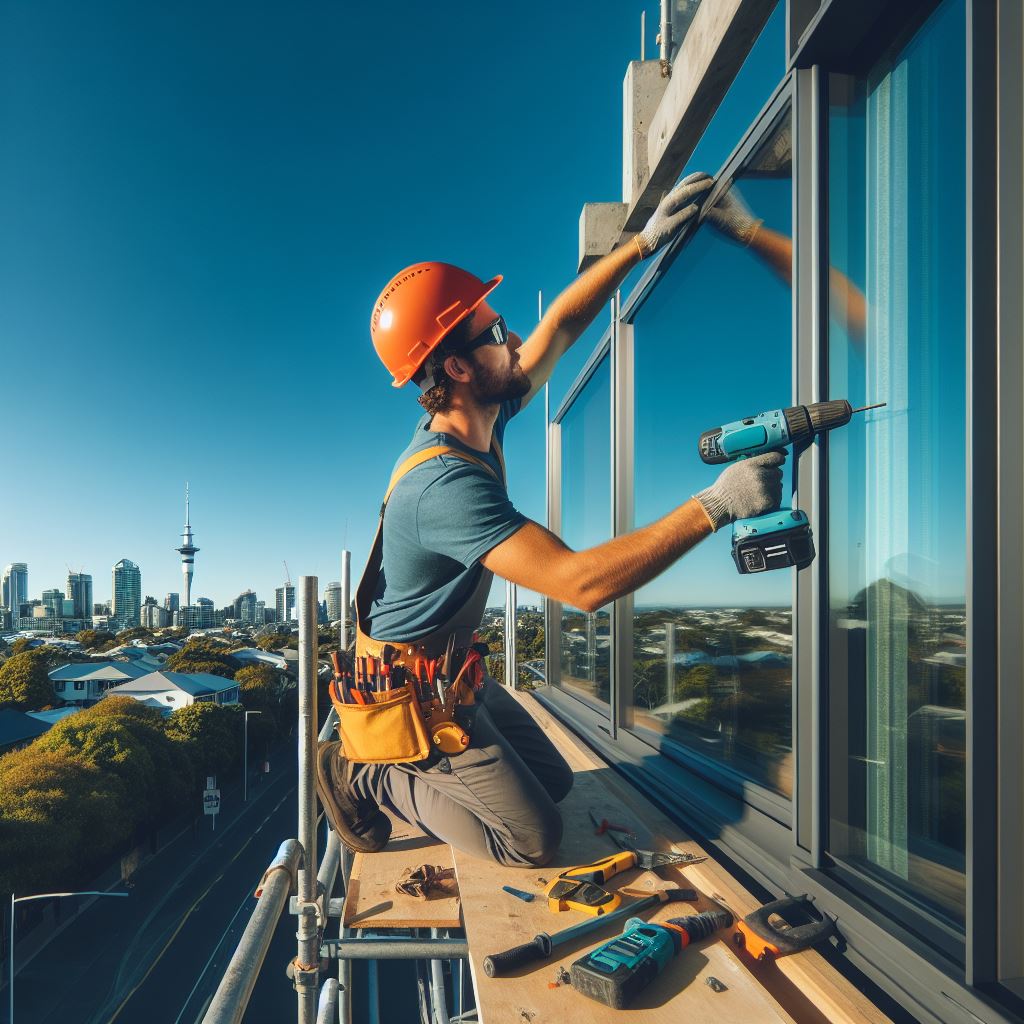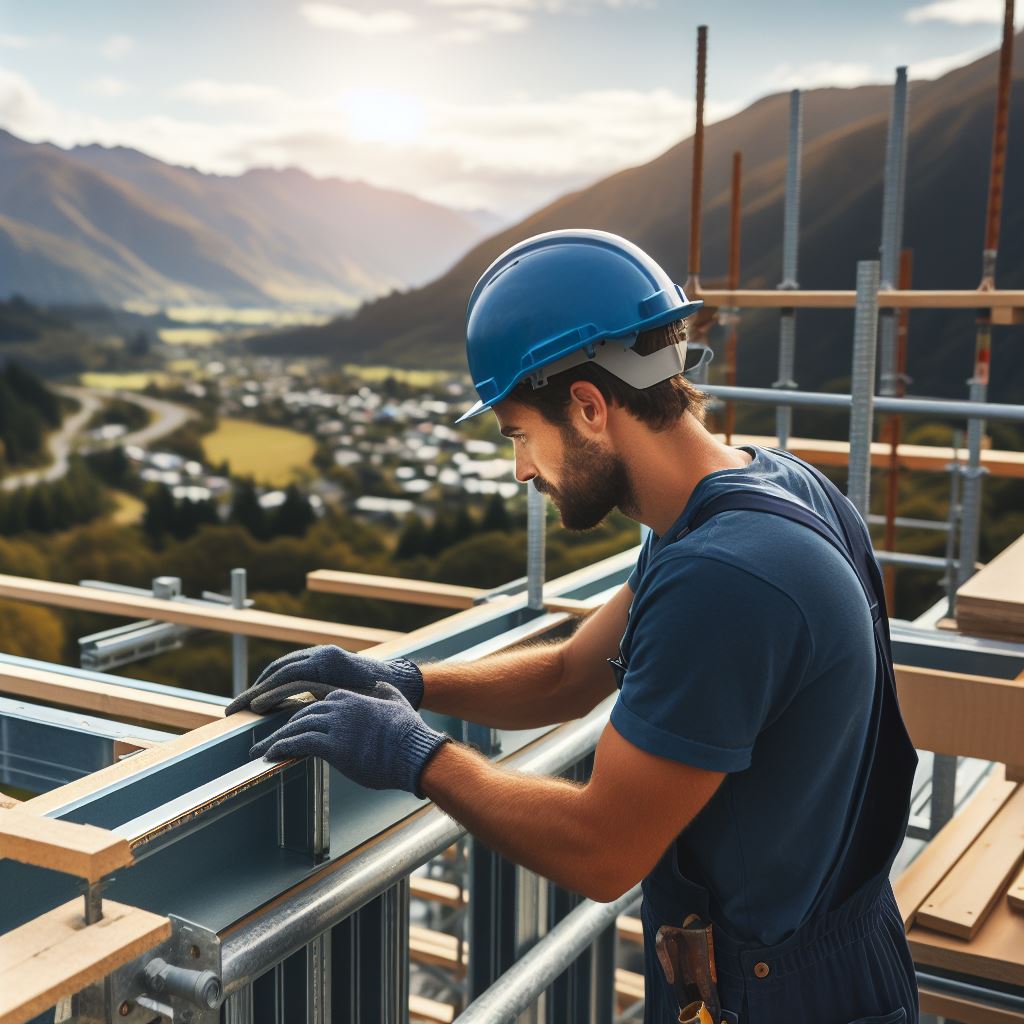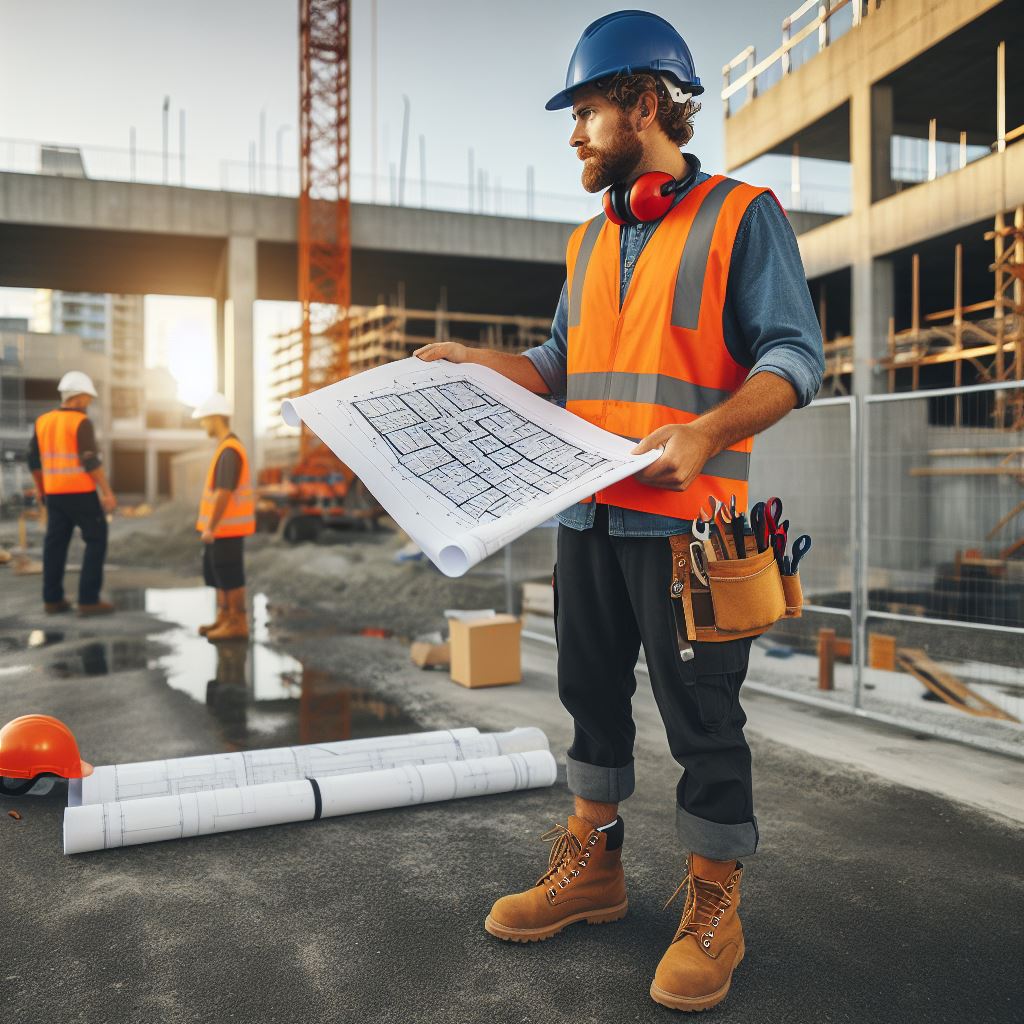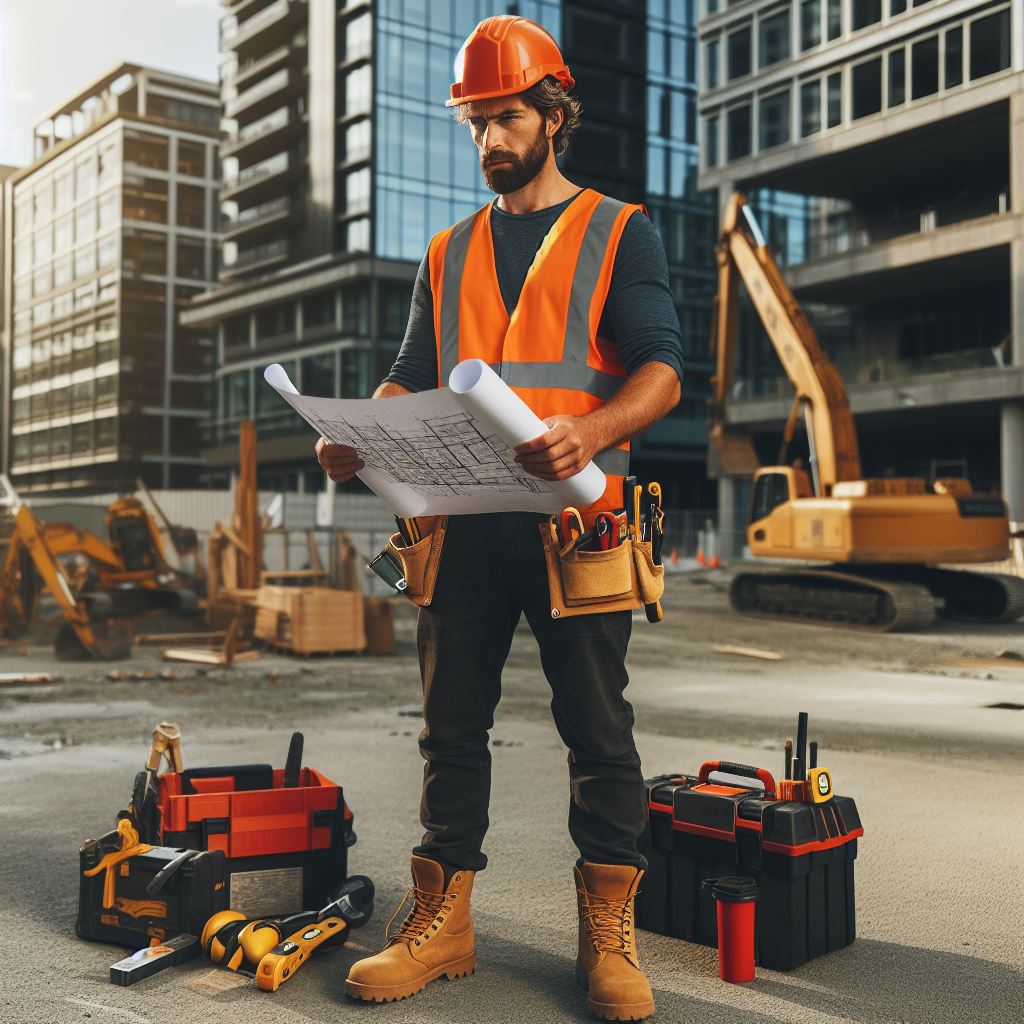Introduction
Having building codes and standards is crucial to ensure safety and quality in construction projects.
In New Zealand, building codes and standards are essential guidelines that regulate the construction industry.
These codes and standards provide a framework for architects, engineers, and builders to follow in order to meet minimum requirements.
The importance of having building codes and standards cannot be overstated
They help protect the public by ensuring buildings are structurally sound and safe to occupy.
Codes and standards also address fire safety, energy usage, and accessibility, enhancing overall occupant wellbeing.
In NZ, building codes are managed by the Ministry of Business, Innovation, and Employment’s Building System Performance branch.
The building codes cover a wide range of aspects, including structural design, fire safety, plumbing, and electrical systems.
They are regularly updated to incorporate changes in building technology, materials, and best practices.
Building standards, on the other hand, provide specific requirements for different types of structures and construction methods.
These standards are developed by industry experts and organizations, such as Standards New Zealand.
Compliance with building codes and standards is mandatory in New Zealand, and building inspectors enforce these regulations.
In summary, building codes and standards are essential for ensuring safe, durable, and sustainable construction in New Zealand.
Key Components of NZ Building Codes & Standards:
When it comes to constructing buildings in New Zealand, there are several key components that must be followed to ensure safety, accessibility, energy efficiency, and more.
The NZ Building Codes & Standards cover a range of requirements that are crucial for every construction project.
Structural Requirements
- One of the fundamental aspects of building construction is adhering to structural requirements.
- These requirements ensure that buildings are designed and constructed to withstand various loads and forces.
- Structural stability, durability, and resilience are all essential factors that need to be considered.
Fire Safety Regulations
- Fire safety is a critical concern in building design and construction.
- The NZ Building Codes & Standards outline regulations for fire protection systems and materials.
- These regulations encompass fire detection, alarm systems, escape routes, fire-resistant materials, and more.
Accessibility Standards
- Ensuring that buildings are accessible for everyone is a key component of the NZ Building Codes & Standards.
- These standards focus on making buildings accessible to individuals with disabilities.
- Requirements include accessible entrances, doorways, elevators, ramps, and adequate circulation space.
Energy Efficiency Guidelines
- Promoting sustainable and energy-efficient buildings is a priority in New Zealand.
- The building codes and standards provide guidelines for reducing energy consumption.
- This includes insulation requirements, energy-efficient lighting, solar panels, and efficient HVAC systems.
Plumbing and Drainage Rules
- Proper plumbing and drainage systems are vital for the functionality and sanitation of buildings.
- The NZ Building Codes & Standards specify requirements for plumbing installation and maintenance.
- This ensures safe water supply, adequate drainage, and proper waste disposal.
Ventilation and Heating Regulations
- Good ventilation and heating are essential for maintaining air quality and occupant comfort.
- The building codes and standards outline regulations for ventilation systems and heating appliances.
- These regulations include ventilation rates, insulation, and the use of energy-efficient heating systems.
Sound Insulation Measures
- Noise control and sound insulation play a significant role in building design.
- Building codes and standards specify requirements to minimize sound transmission between spaces.
- This involves using appropriate building materials, insulation, and construction techniques.
Essentially, the key components of NZ Building Codes & Standards cover structural requirements, fire safety regulations, accessibility standards, energy efficiency guidelines, plumbing and drainage rules.
Ventilation and heating regulations, and sound insulation measures. Adhering to these codes and standards ensures that buildings in New Zealand are safe, sustainable, and functional for all occupants.
Read: The Impact of Technology on NZ Electricians
Personalized Career Consulting
Unlock your potential with expert career advice tailored to your goals. Get personalized guidance and actionable steps toward your dream career in New Zealand.
Get StartedThe Role of Building Codes & Standards in Ensuring Safety and Quality
Building codes and standards play a crucial role in the construction industry, ensuring that buildings meet necessary safety and quality requirements.
These regulations are established to protect the public, promote sustainability, and guarantee structural integrity. Let’s explore the various aspects of building codes and standards:
Ensure structural integrity and stability
Building codes provide guidelines for designing and constructing buildings that can withstand various forces, including seismic activity, heavy winds, and extreme weather conditions.
By adhering to these standards, structures are built to be durable and safe for occupants.
Minimize the risk of fire hazards
Building codes include measures to prevent and mitigate fire incidents.
These regulations ensure the installation of proper fire safety systems, such as fire alarms, sprinklers, and fire-resistant materials, reducing the potential for fire-related dangers.
Provide access for individuals with disabilities
Accessibility codes and standards ensure that buildings can be accessed and used independently by people with disabilities.
These requirements include ramps, elevators, accessible parking spaces, and appropriately designed restroom facilities.
Promote energy-efficient and sustainable buildings
Building codes increasingly incorporate energy efficiency standards to reduce the environmental impact of constructions.
These guidelines focus on insulation, energy-efficient lighting, renewable energy systems, and sustainable materials, ultimately resulting in reduced energy consumption and lower carbon emissions.
Safeguard public health through proper plumbing and drainage
Building codes establish guidelines for plumbing and drainage systems to ensure the delivery of safe water and effective waste disposal.
These regulations prevent the contamination of water sources and the spread of diseases caused by inadequate plumbing practices.
Ensure indoor air quality through ventilation and heating guidelines
Building codes address the importance of proper ventilation systems to maintain a healthy indoor environment.
These standards include requirements for air circulation, filtration, and ventilation rates, helping to eliminate harmful pollutants and providing optimal indoor air quality.
Enhance acoustic comfort and reduce noise pollution
Building codes also consider noise reduction measures to enhance acoustic comfort within buildings.
These regulations focus on noise insulation, soundproofing materials, and guidelines for mechanical equipment to minimize noise pollution, ensuring a peaceful environment for occupants.
Generally, building codes and standards are essential in maintaining safety, quality, and sustainability in the construction industry.
Each aspect, from structural integrity to energy efficiency and accessibility, contributes to creating buildings that are safe, comfortable, and environmentally friendly.
Adherence to these regulations guarantees the well-being of occupants and the broader community.
Read: Residential vs Commercial: NZ Electrician Roles

The Process of Developing and Updating NZ Building Codes & Standards
The role of regulatory bodies, such as the Ministry of Business, Innovation, and Employment (MBIE)
In New Zealand, the Ministry of Business, Innovation, and Employment (MBIE) plays a crucial role in the development and update of building codes and standards.
These codes and standards are vital for ensuring the safety and durability of buildings throughout the country.
The MBIE is responsible for overseeing the development, implementation, and enforcement of building regulations.
They work closely with other regulatory bodies, industry experts, stakeholders, and the public to ensure that the codes and standards meet the needs and expectations of the community.
Consultation with industry experts, stakeholders, and the public
Developing and updating building codes and standards is a collaborative process that involves extensive consultation with industry experts, stakeholders, and the general public.
This ensures that the codes and standards reflect the latest advancements in technology, research, and best practices.
The MBIE organizes meetings, forums, and workshops where industry experts, stakeholders, and the public can provide input and feedback on proposed changes to the codes and standards.
This consultation process allows for a comprehensive and inclusive approach to decision-making.
Transform Your Career with a Professional CV and Cover Letter
Stand out to employers with an ATS-optimized resume and tailored cover letter designed to match your dream role. Let us craft your job application materials for success!
Get StartedIncorporating advancements in technology and research
Building codes and standards need to evolve along with advancements in technology and research.
The MBIE conducts regular research and stays up-to-date with technological advancements to ensure that the codes remain relevant and effective.
Through collaborations with research institutes, universities, and industry experts.
The MBIE gathers information on emerging technologies and research findings that can contribute to the improvement of building codes and standards.
This helps in enhancing the resilience, energy efficiency, and sustainability of buildings.
Regular review and amendments based on lessons learned from past events and experiences
Building codes and standards are not static documents, but continuously reviewed and updated based on lessons learned from past events and experiences.
This iterative process ensures that the codes and standards are responsive to changing needs and challenges.
The MBIE conducts thorough reviews of building codes and standards after significant events, such as natural disasters or building failures.
Lessons learned from these events are incorporated into the codes to prevent similar incidents in the future.
Additionally, the MBIE actively encourages feedback from industry professionals and the public to identify areas for improvement.
This feedback, along with ongoing research and technological advancements, helps shape the continuous evolution of building codes and standards.
Basically, the development and update of NZ building codes and standards involve the critical role of the Ministry of Business, Innovation, and Employment (MBIE).
Through consultation with industry experts, stakeholders, and the public, incorporation of advancements in technology and research, and regular review and amendments.
These codes and standards are constantly improving to ensure the safety and quality of buildings across New Zealand.
Read: Electrical Code Updates 2024: What NZ Needs to Know
Benefits and Limitations of NZ Building Codes & Standards
Building codes and standards play a crucial role in the construction industry, ensuring consistent quality and safety.
They facilitate compliance, reducing the likelihood of costly rework, and enhance consumer confidence in the built environment. However, these regulations also have limitations that need to be addressed.
Benefits of NZ Building Codes & Standards
- Ensuring consistent quality and safety across the construction industry.
- Facilitating compliance and reducing the likelihood of costly rework.
- Enhancing consumer confidence in the built environment.
Building codes and standards establish minimum requirements for the design, construction, and performance of buildings.
By providing guidelines, they help maintain a minimum level of quality and safety for all structures.
These regulations ensure that buildings can withstand environmental conditions and perform their intended functions.
Compliance with building codes and standards is crucial for construction professionals. These regulations help them avoid costly rework and ensure that their projects meet the minimum requirements.
By following these guidelines, builders can mitigate risks, prevent errors, and deliver high-quality results.
Moreover, building regulations and standards enhance consumer confidence in the built environment.
When potential buyers or renters know that a building meets specific safety and quality criteria, they feel more secure in their decision to invest or occupy the property.
This increased confidence leads to a more stable and trustworthy real estate market.
Limitations of NZ Building Codes & Standards
- Potential gaps or outdated regulations.
- The need to balance flexibility with safety and quality standards.
Despite their many benefits, building regulations and standards also have limitations that need to be addressed. One limitation is the potential for gaps or outdated regulations.
In a rapidly evolving industry, regulations may not always keep up with technological advancements or changing construction practices.
This can lead to inconsistencies or insufficient requirements, compromising safety and quality.
Additionally, there is a need to balance the need for flexibility with the objective of maintaining safety and quality standards.
Building regulations and standards should allow for innovation and adaptation to unique circumstances while still ensuring that the fundamental principles of safety and quality are upheld.
Striking this balance is essential to foster creativity and advancement in the industry without compromising overall standards.
Therefore, NZ building regulations and standards bring numerous benefits to the construction industry. They ensure consistent quality and safety, facilitate compliance, and enhance consumer confidence.
However, it is important to address the limitations, such as potential gaps or outdated regulations, and find a balance between flexibility and maintaining safety and quality standards.
Boost Your Career with a Standout LinkedIn Profile
Attract recruiters and expand your network with a fully optimized LinkedIn profile tailored to highlight your strengths and professional goals. Let your profile open doors to new opportunities!
Get OptimizedRead: Women in Electrical Trades: NZ’s Growing Trend
Conclusion
Understanding NZ Building regulations and Standards is of utmost importance in the construction industry.
It is crucial for individuals in the industry to stay updated on recent developments.
Building professionals play a vital role in implementing and maintaining compliance with regulations.
By adhering to these codes and standards, we ensure the safety and quality of our buildings.
Compliance ensures that buildings can withstand natural disasters and meet environmental sustainability requirements.
Non-compliance can lead to costly rework, delays, and even compromise the safety of occupants.
Investing in professional development and training can help individuals and companies maintain compliance.
It is essential to prioritize the education and training of those involved in the construction industry.
By doing so, we can create safer, more sustainable, and resilient buildings that contribute positively to our communities.
Let us all work together in understanding and implementing these codes and standards for a better future in the construction industry.




